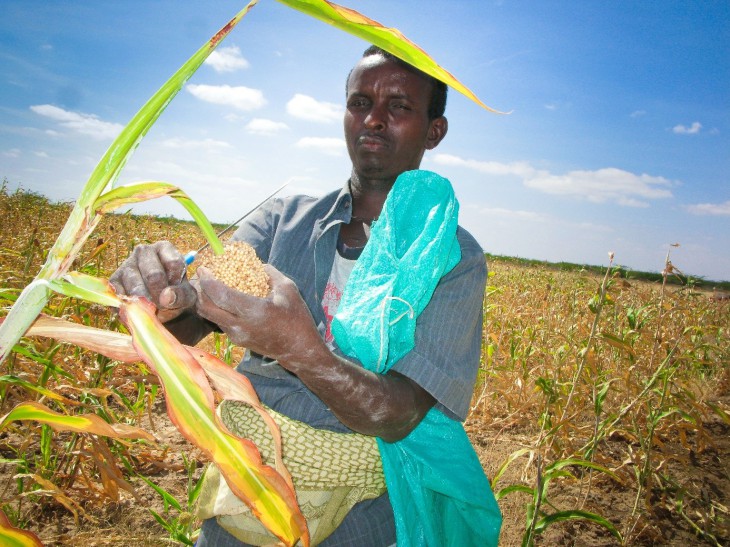Food imports in Somalia hit $1.5b annually as crop production dips-report

The average crop production between 1980 and 1990 stood at half a million tons but that number has reduced to an average of 280,000 as of 2015

By T. Roble
Agricultural imports in Somalia, mainly food has risen by 18 times to stand at $1.5 billion annually up from $82 million in the late 1980s with local crop production meeting only 22% of per capital cereal needs, a new report reveals.
The report, Rebuilding Resilient and Sustainable Agriculture produced jointly by the World Bank and the Food and Agriculture Organisation (FAO) notes that Somalia faces chronic food crop deficit as land under cultivation has shrunk by half of the pre-war period.
“Agricultural imports rose by a factor of 18, reaching almost $1.5 billion in 2015, up from an annual average of only about $82 million in the late 1980s,” the report which is a first under the Country Economic Memorandum series notes.
The report attributes this increase to the combination of increased domestic food demand (driven by rapid population growth and urbanization and largely supported by remittances) and the collapse of domestic crop production leading to a massive increase in food imports.
This inadequacy of food crops has subjected the pastoral, farming and fishing communities to high rates of chronic malnutrition.
In the pre-war period, the report observes, cultivated area under irrigation was estimated at 222,950 hectares with the most recent drought reducing it even further. About 5% or 3 million hectares of Somalia’s total land is cultivable with 2.3 million under rainfed conditions and 700,000 hectares suitable for either pump or recession controlled.
FELL BY HALF
The average crop production between 1980 and 1990 stood at half a million tons but that number has reduced to an average of 280,000 as of 2015. In its March brief, FAO said last farmers harvested 174,000 tons of grain which is over 20 percent below the average of the previous five years.
Armed militias belonging to clans from the central regions with little farming skills and experience continue to occupy prime farmlands in the agriculturally rich Lower Shabelle region further limiting efforts at increasing crop production, the report to be launched tomorrow further says.
RELATED: Hunger to persist as cereal harvest remain less than 200,000 tonnes average
All is not doom and gloom though as Somalia has registered impressive results in animal production making it one of the most lucrative sectors.
LIVESTOCK PRODUCTION
Livestock production has contributed to dramatic increase in agricultural export in Somalia reaching $634 million in 2015, more than five times the value before the civil war.
At an estimated stock levels of 53 million as of 2014 against 40 million in the late 1980s, livestock production has steadily improved in Somalia but exports registered a fall in 2016/17 owing to the drought and renewed import ban by Saudi Arabia. Records from 2016 indicate Somalia has the largest number of camels (7.1 million) in the world.
But Somalia has not realized optimal value from livestock production despite the steady rise over the years in numbers. Most of the livestock exports are in form of live animals denying the country of returns from value addition which accrues from processing.
Similarly, the report notes, despite milk production mainly from camels increasing steadily from the 1980s to reach a market value of $3.3 billion in 2014, the country exports none but instead, imports dairy products.
It is the irony that powder milk containers dot most households in Somalia.